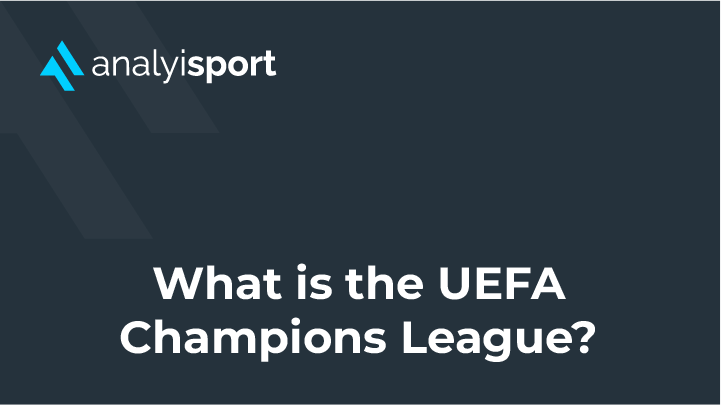What is The FIFA Club World Cup?
The FIFA Club World Cup is changing. More teams, a new format, and bigger stakes mean this competition is evolving into a major global event.
With clubs from all continents competing, it’s an opportunity to see top teams clash and lesser-known sides challenge football’s biggest names.
Financially, the tournament has grown significantly:
- Prize Money: The total prize fund for the 2023 tournament was $16 million, whereas the 2025 tournament is projected to have a prize fund of $2.65 billion. (Source: SI.com)
- Distribution:
- Each of the 32 teams is expected to receive a $50 million participation fee.
- The winner is anticipated to earn $100 million. (Source: SI.com)
- Sponsorship and Revenue:
- FIFA aims to generate $800 million from broadcast rights and up to $1.2 billion from partnerships and sponsorships. (Source: The Times)
- Notable sponsorship deals have been secured with Hisense and AB InBev. (Source: The Times)
The Basics
- The FIFA Club World Cup began in 2000.
- It brings together the best club teams from each continent.
- The tournament will expand to 32 teams in 2025.
- European clubs have dominated, but South American teams hold historic victories.
- The competition will now take place every four years instead of annually.
What is the FIFA Club World Cup?
The FIFA Club World Cup is a major football tournament where top clubs from different continents compete to be crowned the best in the world. It has grown in importance and will expand in 2025, featuring more teams and a new format.
Winners of this tournament are hailed as the best club team in the world, bringing global recognition.
The FIFA Club World Cup was established in 2000 and is now a valuable part of FIFA’s set of global tournaments. Yet it took nearly a century after the birth of the federation itself to see this competition come to fruition.
What took it so long to create a cup to unveil the global champion of all club champions? Has it presented any notable moments of footballing genius and is it a fan favourite? In this article we explore the complex history surrounding the FIFA Club World Cup.
Overview of the FIFA Club World Cup
First played in the year 2000, the FIFA Club World Cup (then known as the World Championship), has garnered the attention of the world’s footballing fans, sporting media and TV pundits.
The initial tournament featured 9 champions from six confederations and was hosted by the great footballing nation of Brazil. Two South American teams made the final that saw a goalless draw in extra time. Corinthians went on to beat Vasco da Gama 4-3 on penalties. It generated significant interest in England when Manchester United withdrew from the FA Cup to compete, becoming the first FA Cup winners to not defend their title.
No competitions took place between 2001 and 2004, they were either cancelled or they failed to get off the ground at all. In 2005 the Intercontinental Cup was absorbed into the FIFA Club World Cup (still known as the World Championship) and in 2006 the competition was re-titled the FIFA Club World Cup.
Since then, the competition has been played on an annual basis and lasts for roughly two weeks. The timing of the competition varies, depending on the seasonal weather of the hosting nation and to prevent clashes with other international tournaments.
As of 2025, Real Madrid rank number one with six wins. Barcelona take second place with four Cup wins, and Corinthians, Manchester United and Liverpool have proudly lifted the trophy twice.
Changes within the competition come into force in 2025, seeing the launch of a new and improved FIFA Club World Cup.
History of the Tournament
Whilst the inaugural FIFA Club World Cup took place in 2000, it was not the first time efforts had been made to see two European club sides contest a club “World Championship.” In 1895, winners of the English League, Sunderland, played Heart of Midlothian, beating them 5-3.
Two years later, a tournament christened the “Football World Championship” saw FA Cup winners, Aston Villa, defeat winners of the Scottish Cup, Hibernian. These teams were both winners of the only two national competitions at that time.
Not long after that, in 1909, the Sir Thomas Lipton Cup was established. This saw clubs from England, Italy, Switzerland and Germany compete against one another. The same contest was held once more in 1911, seeing the English amateur team, West Auckland raising the trophy both times.
The Intercontinental Cup (not to be confused with the FIFA Intercontinental Cup), a UEFA/CONMEBOL collaboration, was established in 1960. Contested between the winners of European UEFA Champions League and the top of the South American Copa Libertadores. This tournament ceased in 2004.
In 1993, FIFA began to execute plans to create their own competition to find the world’s best club. They titled it the FIFA Club World Cup. Not all confederations were onboard, even after the maiden contest.
Bobby Charlton, threw his footballing weight behind the campaign and claimed that this tournament allowed clubs, “the fantastic chance of becoming the first genuine world champions.” Which, from the mouth of a World Cup Winner, was high praise indeed.
In addition to this accolade from a footballing legend, the prize fund hit a mighty $28 million US dollars and TV rights sat at a staggering $40 million.
In the year 2000, more than a century after Sunderland and Heart of Midlothian had thrashed out the first ever club World Championship, FIFA’s Club World Cup took to the stage.
Current Format
Once an annual contest, it is now shifting to a quadrennial (4 yearly) cup. It has also expanded, once hosting only seven teams; now 32 two are pitted against one another. All six confederations are represented.
Of all the confederations, Europe (UEFA), is apportioned the highest quota of entrants, receiving 12 places. Teams are selected by their Champions League performances over a four year period.
The South American Clubs (CONMEBOL) receive an allocation of six places, four each for the North and Central America Confederation (Concacaf), Asia (AFC), and Africa (Caf). The Oceania Confederation (OFC) receives one allocated place. Points are distributed for performances in continental club competitions that have taken place over the last four years.
There has been some confusion about the club selection process. With David Beckham’s Inter Miami earning themselves a spot after only winning the 2024 MLS Supporters’ Shield.
The new format involves all 32 teams being divided into groups of four. A round-robin format sees each team play each other once.
The top two teams in each group progress to the knockout stage. The tournament closes with the celebration of a first and second place team. There is no prize for the third placed team.
Significance of the FIFA Club World Cup
For many parts of the world, there is huge significance attached to this contest. For nations such as Africa and Asia, this contest provides an opportunity to see their club sides compete on the world stage.
In South America, the competition is celebrated and revered. It is no secret that in South America football permeates the heart and soul of its people – so any opportunity to revel in the beautiful game is snatched with both hands. Brazilian teams also claimed their victory in the first three competitions, so this tournament holds a special place in the hearts of its people.
For the South American nations, the competitions typically take place during their footballing off season. This provides fans with a chance to indulge their passions. It also allows players to showcase their talents with less fear of injury.
There is an attractive financial incentive in taking part too. Qualification to the tournament is suggested to guarantee each club ₤50 million and the prize pot crammed with a further ₤2.5 billion. Coupled with sponsorship deals and other lucrative bonuses, the winning side could net up to ₤100 million.
Criticisms and Challenges
In response to some criticism, the FIFA Club World Cup has undergone a re-launch. Once described by Sepp Blatter as his ‘”greatest mistake,” the FIFA Club World Cup has been subject to significant change under the reign of the current FIFA president, Gianni Infantino.
The most recent changes came about after ongoing discontent with the way the tournament was structured, its perceived bias towards the European teams and its lack of global attention.
Expanding the tournament to include 32 teams is FIFA’s attempt to dispel negative feedback. By including a broader range of teams from across the confederations, they aim to cast the net over a wider audience and generate wider viewing audiences.
Some European fans regard the FIFA Club World Cup as little more than an out-of-season tournament. And, some European players feel this tournament adds even more pressure to an already jam-packed calendar.
Memorable Moments and Winners
Despite the fact that FIFA have encountered a reasonable amount of criticism about the Club Cup, there have been plenty of magical moments on the field of play.
In 2005, Sao Paulo beat Liverpool 1 – 0 in a shock performance. Their goalkeeper calmly kept a clean sheet, exasperating Liverpool’s Steven Gerrard and Fernado Morientes. The South American team not only won the tournament but they became the world’s first team to grasp three world titles from three attempts.
After beating Club America (Mexico) 4 – 0 in the 2006 semi-finals, no one expected to see Barcelona lose to International in the final. Ronaldinho’s side succumbed to a late goal by Adriano Gabiru, less than 15 seconds after it had been on their own goal line.
The undeniable genius of Lionel Messi saw Barcelona take home the silverware on three occasions – and could potentially see him lift a fourth trophy at the next tournament.
With English clubs bagging four wins and Real Madrid a total of six, there’s so much to play for when the 2025 tournament arrives in June.
Love it or loathe it – the FIFA Club World Cup is on the verge of something new. Adapting to meet the needs of its critics; it’s offering a greater pool of teams and more matches with the current format. Becoming a quadrennial contest might encourage fans to feel that magical flutter of excitement each time the tournament rolls around.
For a competition in relative infancy it has undergone several rebrands and worked hard to gain the respect and admiration from the confederations and the fans. And, to ensure it remains relevant, and revenue inducing, it will surely continue to do so.
Questions
What is the FIFA Club World Cup 2025 trophy?
The FIFA Club World Cup 2025 trophy will be awarded to the best club team in the world. While FIFA has not officially revealed any design changes, it is expected to resemble the current version.
How does the FIFA Club World Cup work?
The tournament features 32 clubs from six continents, playing in a group stage followed by knockout rounds. Teams qualify based on continental competitions over four years. The top two from each group advance, leading to a final where the winner is crowned world champion.
What is the difference between the Club World Cup and the World Cup?
The FIFA Club World Cup is for club teams, while the FIFA World Cup is for national teams. The Club World Cup determines the best club side, whereas the World Cup decides the top international team. The formats and qualifying processes also differ, with clubs competing in continental tournaments to qualify.
Related Courses:

AnalyiSport Gift Voucher
£25.00
Share this article
Our Learning Pathways
AnalyiSport is for everyone who is passionate about analysis in football. Where are you in your development journey?
Become a Football Scout
As more clubs than ever look to build data into their recruitment process, an understanding of recruitment analysis is your ticket to success in the game.
Related Articles
Our team provides news and insights from the cutting edge of football analysis.






